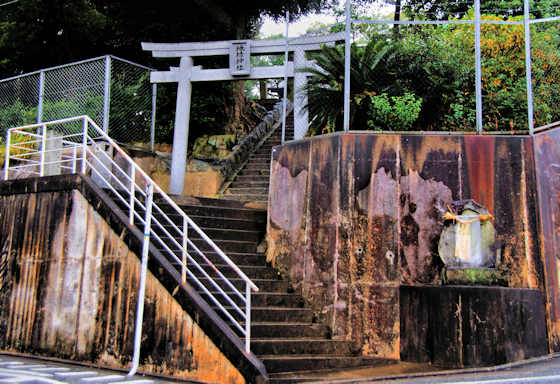On the afternoon of Sunday, September 4th, 2011, the eighth day of my Shikoku Pilgrimage, I walked the main road west from Temple 21, Tairyuji, towards Temple 22, Byodoji. Early that morning I had left the mountains where I had been trapped by Typoon Talas for a couple of days, took the ropeway up to and down from Tairyuji, and passed through the village of Naka. There were no major sights along the road, but the usual succession of small hokora, roadside shrines, like this one that was guarded by Okinawan style shishi
I climbed up to a largish Hachiman Shrine that, like so many shrines, gave the appearance of being abandoned. I was rewarded by a pair of unusal komainu, something I am always on the look out for. Coming back down to the main road a tiny old lady came out of the door of her house and insisted I sit awhile and drink some cold green tea she offered me.The kindness of strangers. I am not particularly fond of green tea, but it is impolite to refuse Osettai.
You can't walk far in Japan without passing a Jizo, and I must admit I pass many of them by, but a statue of Fudo Myo O, my favorite Buddhist deity, almost always call for a prayer and a photo.
Cresting the pass, the view is, for me anyway, what I would describe as typical Japan.
And then some more small shrines with diverse komainu before encountering what was to be the days most pleasant surprise just before reaching Byodoji.....










































